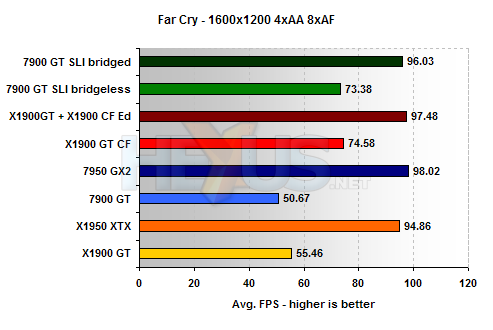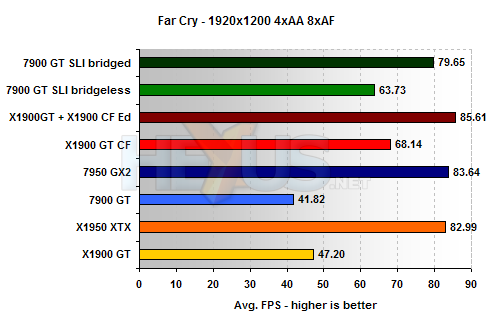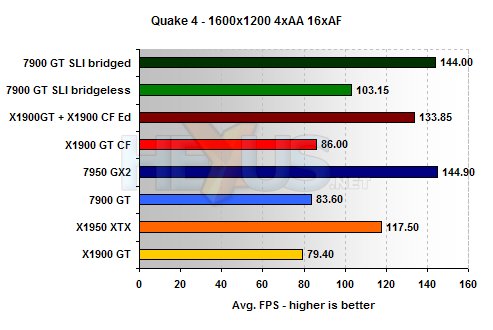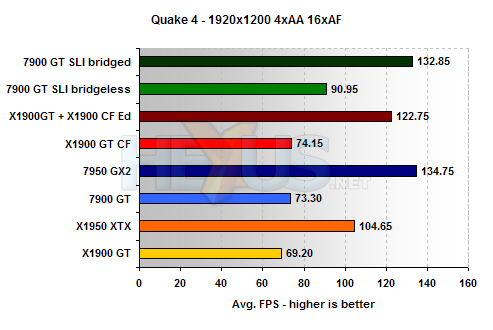Performance: Far Cry and Quake 4
Far Cry
Far Cry is a good place to start because both CrossFire and SLI give similar performance results.

Bridgeless SLI is 24% slower than bridged SLI, while dongle-less CrossFire is 23% slower. Not much in it then. What's interesting is when you compare those numbers to single-GPU results. Bridgeless 7900 GT is roughly 50% quicker than a single 7900GT, while with the bridge, the difference is more like 90%. For CrossFire, fun with a dongle gets you a 75% boost, while without a dongle you'll only see a 35% FPS top up.

Logic suggests that with more pixels to render, the cards will need to exchange more data, so the impact of taking away the dongles and bridges should be larger. Nope!
Bridgeless SLI is 20% slower than bridged, whilst CrossFire incurs the same performance hit when no dongle is present. So the performance loss is, in fact, smaller. Huh!?
It seems to us that the extra work the GPUs are doing at this higher resolution is of greater consequence than the bandwidth used between the cards. FPS drops, the performance differences between our different multi-GPU link scenarios tighten.
Quake 4

In Quake 4, dongle-less CrossFire doesn't fare too well, but with a dongle, performance is much better. That said, ATI's cards don't seem able to keep up with NVIDIA's.
Bridgeless SLI comes with a 28% performance loss, while for dongle-less CrossFire there's a hefty 37% setback. That makes X1900 GT CF no better than a single GeForce 7900 GT or, indeed, a single X1900 GT. There's something not quite right here.
NVIDIA's 7950 GX2 implements an SLI bridge between its two PCBs, performance coming out as almost identical to bridged 7900 GT SLI.

At 1920x1200, the performance hit to bridgeless SLI when compared with bridged is 32%, so higher than at 1600x1200. SLI uses AFR with Quake 4, whereas Far Cry uses SFR. Perhaps our previous hypothesis holds for AFR rather than SFR?
CrossFire performance without a dongle is still dire. 'Nuff said about that really.









